2025 May
3 Perfect Days in Buenos Aires (+ a Day Trip to Uruguay!)
by Evi


Buenos Aires, the city where tango was born, steaks are sacred, and every corner whispers a piece of history (usually with a coffee in hand). With European elegance and Latin American soul, Argentina’s capital is a feast for the senses—and we’re here to tell you how to spend 3 full and fabulous days making the most of it.
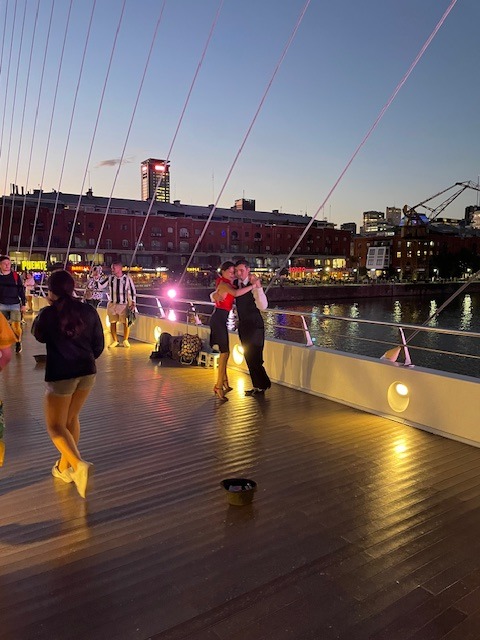

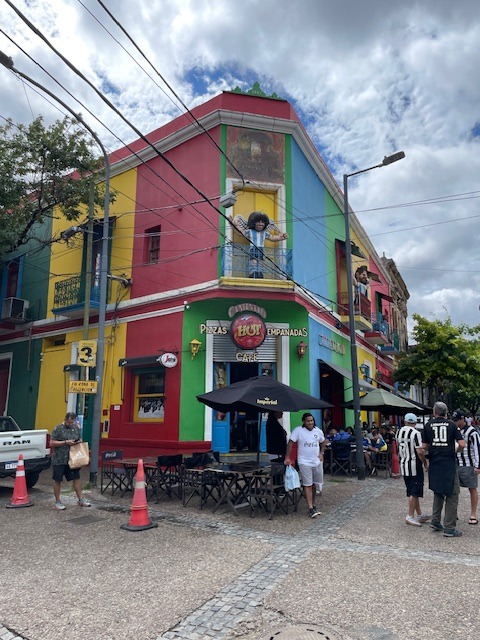

Day 1: History, Icons & A Touch of Palermo Cool
Kick off your Buenos Aires adventure with a jam-packed sightseeing day.
Start at Plaza de Mayo—the political and historic heart of the city, where revolutions sparked and protests still echo. Here, you’ll spot the Casa Rosada, the iconic pink Presidential Palace where Eva Perón gave her famous balcony speeches. Right nearby is the Catedral Metropolitana, the final resting place of General San Martín, Argentina’s national hero.
Pro-Tip: You can also pay a visit to the Casa Rosada Museum which is located just behind Casa Rosada in the former galleries of the Taylor Customs. The admission is free and exhibits around 10,000 historical pieces that belonged to many presidents of Argentina. The museum is open from Wednesday to Sunday, 10am-5pm.
From there, you will stroll towards the waterfront and you will land in Puerto Madero, Buenos Aires’ modern and swanky district filled with renovated docks, skyscrapers, where you can marvel the Puente de la Mujer - Women's Bridge, which is a pylon bridge designed by the Spanish architect Santiago Calatrava - yes the same that designed the emblematic OAKA pavilion, symbol of the 2004 Olympic Games in Athens.
If you need a coffee break, the road will lead you to Café Tortoni! Founded in 1858, this place is an institution. You can sip a café con leche or a hot chocolate con churros, under its stained glass ceilings and feel incredibly intellectual and dramatic.
Next stop: the Avenida 9 de Julio, the widest avenue in the world (seriously, 7 lanes in each direction) whose name honors Argentina's Independence day 9 of July 1816. Snap some photos of the Obelisco which was it was erected in 1936 to commemorate the quadricentennial of the first foundation of the city, and continue north toward one of the most unique places in the city: Recoleta Cemetery.
Why visit a cemetery, you ask?
Because it’s basically an open-air art museum filled with marble mausoleums, elaborate tombs, and the grave of Evita Perón. Recoleta cemetery is open daily from 9am-5pm, you can buy your admission ticket of 14.00 euro at the ticket in the entrance. Right outside, don’t miss the Plaza Francia Art Fair (open only on Fridays and weekends), packed with local artists, trinkets, and artisans.
Closed your day with a lomito sandwich at La Rambla Café—a delicious local take on steak in sandwich form—and topped it all off with a drink at Plaza Serrano in hipster-chic Palermo Soho.
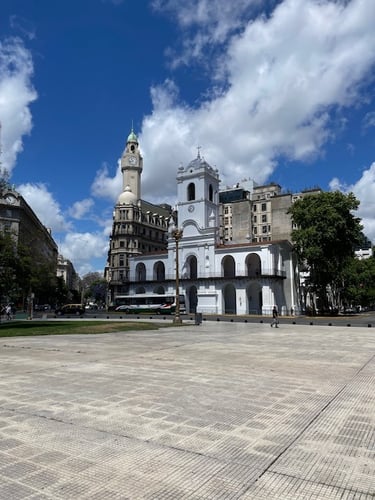
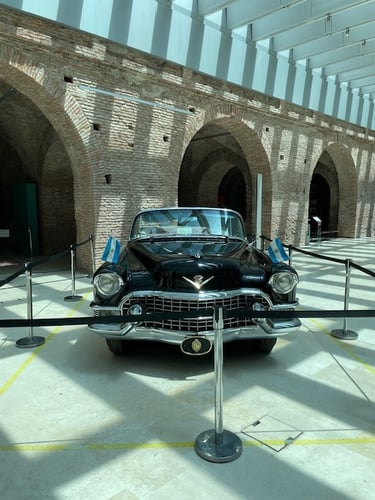
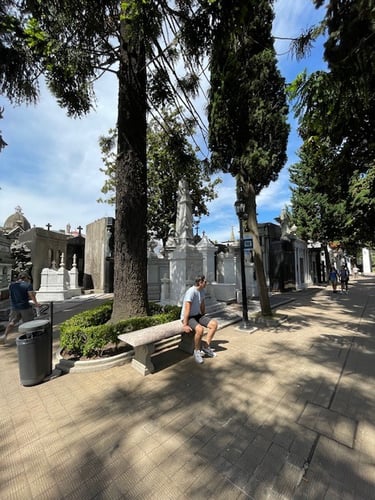



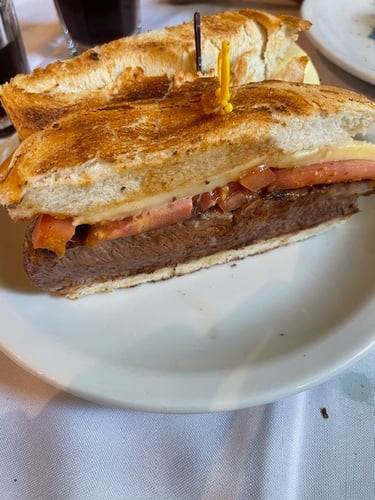
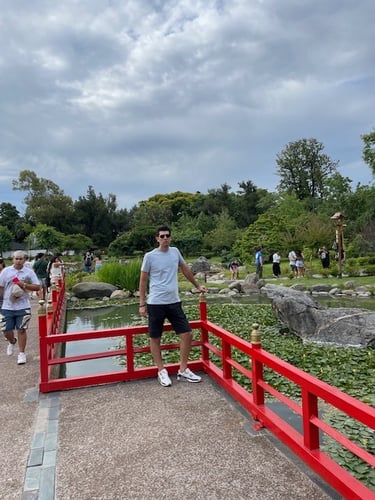








Day 2: Markets, Colors & Tango Energy
If you stay at the Palermo area, start your day strong at 1640 Café Resto (we highly recommend the medialunas), and then dive straight into Buenos Aires’ love affair with antiques and markets at Mercado de las Pulgas, a haven for antique lovers and treasure hunters.
Then it's time for San Telmo, one of the oldest neighborhoods in the city. The San Telmo Market, which was created in 1897 and declared a national historic monument in 2000, is a must-see food, antiques, handmade goods market. The San Telmo Market is open Monday to Sunday 9am-8pm. We had lunch at Vórtice inside the market (10/10 steak, btw). Every Sunday since 1970, the streets outside the market turn into a massive antique and artisan fair , the San Telmo Fair.
In the afternoon, hit the colorful and chaotic La Boca, the neighborhood of Diego Maradona. Known for its technicolor houses and tango-filled streets, it’s also the home of La Bombonera, Boca Juniors’ legendary stadium. Even if you’re not a football fan, the energy here is unreal. La Boca neighborhood was built by Italian immigrants from Genova who were dock workers and stole various paints to paint their houses. This is how the neighborhood became so colorful. The area is dangerous after 6:00pm.
Pro Tip: Want a chill moment? Jardín Japonés is your place, peaceful, beautifully maintained, and a total zen break from the city bustle. The Japanese Garden was inaugurated on May 17, 1967, designed and built by the Japanese community, and later donated through the Embassy of Japan to the Municipality of Buenos Aires, in gratitude to the Argentine people for being the country that welcomed them during the time of immigration. The garden is open from 10am-7pm with admission fee 3.50 euro.
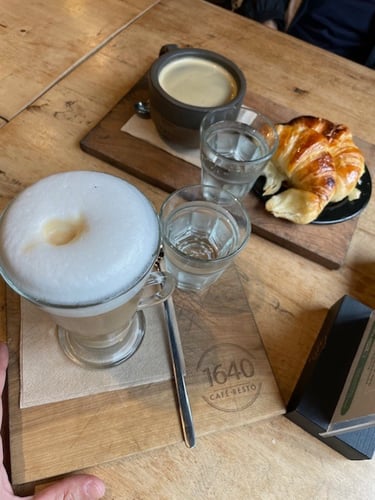
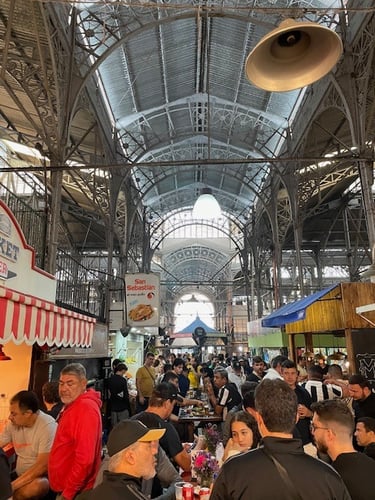
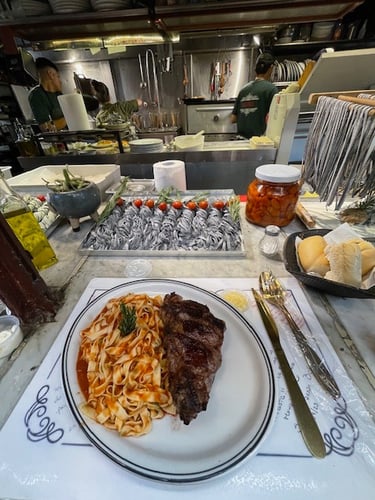
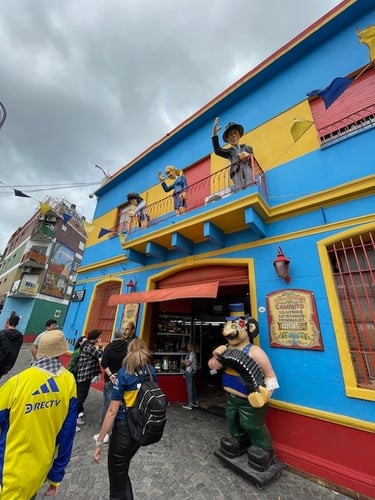
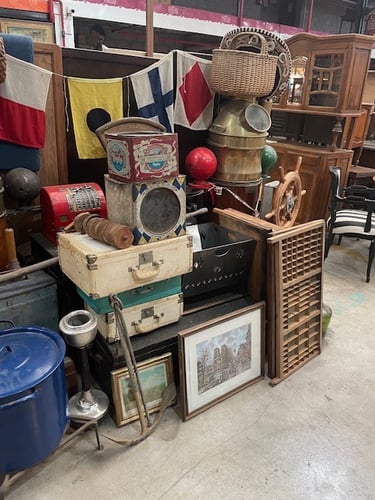
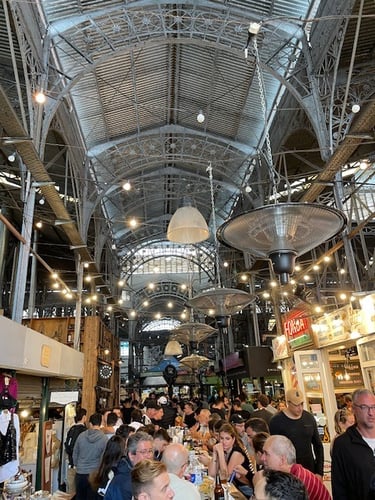
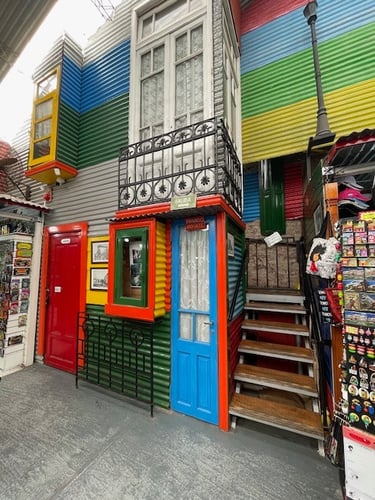
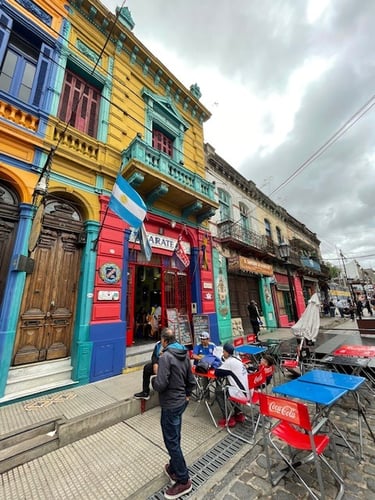








Day 3: Day Trip to Uruguay – Colonia del Sacramento
Crossing an international border for a day? We’re in.
Book a day trip to Colonia del Sacramento through GetYourGuide with Colonia Express, which is totally worth it, but plan ahead! Take the bus to the Colonia Express Terminal at the port, and here’s what you need to know:
Arrive early: Passport control for both Argentina and Uruguay happens here before departure. The queues were long and slow, and our ferry left nearly an hour late because of delays at Uruguayan customs.
The boat ride is smooth, but very crowded. The outside deck was packed, so we grabbed seats inside.
Once you arrive in Colonia, meet up with your group for the included walking tour of the historic center. It is honestly magical, cobblestone streets, Portuguese-Colonial buildings, the iconic lighthouse, and a chilled-out vibe that will make you feel like you’d stepped back in time.
After the tour, find a cozy restaurant for lunch and try the one and only Chivito sandwich! Chivito is the national dish of Uruguay. It is a sandwich of sliced beefsteak (churrasco), mozzarella, ham, tomatoes, mayonnaise and black or green olives. A chivito commonly also includes bacon and fried or hard-boiled eggs.
Later wonder through the historic part of the town, end your day with an amazing dulce de leche ice cream (don’t leave Uruguay without trying one). By sunset, head back on the ferry and watch the skyline of Buenos Aires light up.
After arriving back to Buenos Aires, take a final walk along the glittering Puerto Madero docks before indulging in a cheesy, doughy perfection that is El Imperio de la Pizza. If you’re going to have one pizza or a fugazzeta in Buenos Aires, make it this one. Loud, chaotic, and absolutely legendary.
BONUS: Got More Time? Try Tigre!
If Colonia’s not your vibe or you want to keep things local, spend a day in Tigre, a river delta escape just outside the city. Hop on a train from Retiro Station, and in under an hour you’ll be gliding through canals, visiting quirky museums, and shopping at the Puerto de Frutos market.
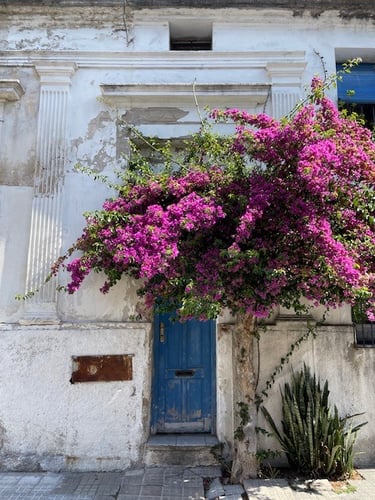
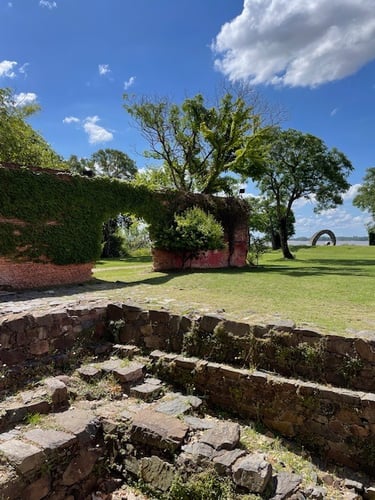
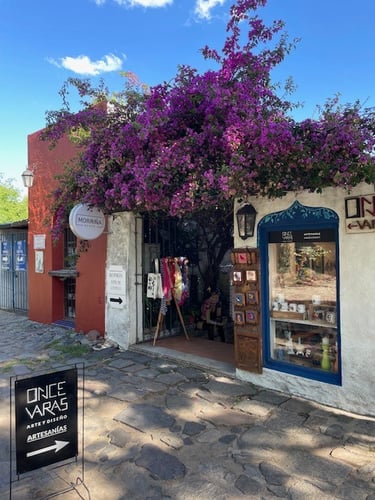
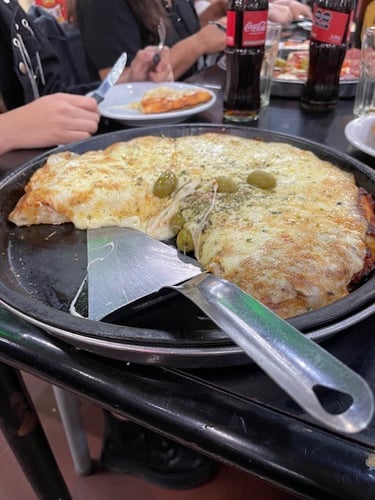
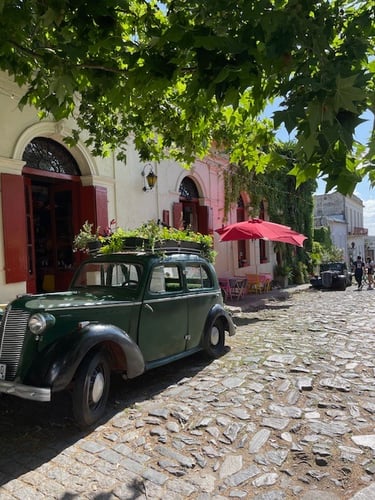
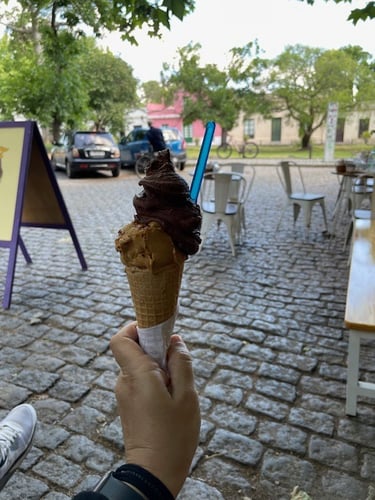
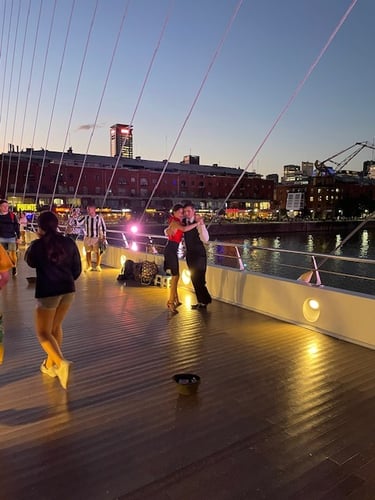
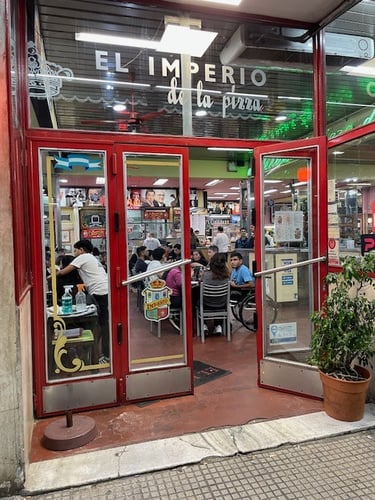








Where to Stay in Buenos Aires: Finding Your Perfect Barrio
One of the most common questions we get is: “Where should I stay in Buenos Aires?”
Well, after spending several days exploring the city from sunrise to steak o’clock, here’s our no-nonsense, totally biased, and slightly dulce-de-leche-fueled guide to the best areas to stay, plus where we stayed and why we loved it.
1. Palermo: The Cool Kid of Buenos Aires
Best for: Nightlife, foodies, boutique lovers, digital nomads
If Buenos Aires were a party, Palermo would be the guest everyone wants to hang with. It’s made up of smaller sub-neighborhoods like Palermo Soho and Palermo Hollywood, each packed with stylish cafés, trendy restaurants, concept stores, and cocktail bars. We stayed in Palermo Hollywood, and it was the perfect mix of lively but livable. The area is filled with tree-lined streets, street art, and a youthful vibe. At night, it comes alive—think rooftop bars, packed plazas (like Plaza Serrano), and restaurants open past midnight.
Pro tip: Airbnb options are abundant in Palermo, though prices are slightly higher than in Centro. But you’ll get style, safety, and a built-in social scene.
2. Centro: The Historic Heart
Best for: Sightseeing, architecture lovers
Centro is where you’ll find some of Buenos Aires’ greatest hits: Plaza de Mayo, the Casa Rosada, the iconic Avenida 9 de Julio, and the elegant Café Tortoni. It’s packed with history and grandeur. But here’s the deal: after business hours, Centro can feel a bit… quiet. Most government buildings and offices are here, so it’s bustling by day but not exactly the nightlife capital by night. If you’re not planning on partying until 2 a.m., though, it’s a solid base.
3. Recoleta: Elegance & Evita
Best for: Museums, luxury, leafy walks
This posh neighborhood screams European elegance. Think Parisian-style townhouses, wide boulevards, and parks galore. It’s also home to the Recoleta Cemetery, where Evita Perón rests. While not as hip as Palermo or as buzzing as San Telmo, Recoleta offers a more refined, peaceful stay. It’s perfect if you’re into art galleries, libraries, and strolling rather than partying.
4. San Telmo: The Boho Classic
Best for: Antiques, cobblestones, artsy vibes
If you’re into bohemian charm, tango, and old-world atmosphere, San Telmo is your barrio. It’s the oldest part of the city, and it wears its history proudly—especially during the Sunday San Telmo Market, when antique stalls and tango dancers flood the streets. It’s a bit quieter during the week, but full of character and quirky Airbnb options inside colonial buildings. We lunched at Vórtice in the bustling San Telmo Market, and it felt like we were part of the city’s rhythm.
Our Take?
Palermo was hands down the best base. It gave us easy access to both the touristy hotspots and the real, lived-in side of Buenos Aires. The city overall felt very safe, and we had no issues walking around day or night. Centro may have looked a little more run-down and quiet at times, but it was never unsafe, just a different vibe.
No matter where you choose to stay, Buenos Aires will surprise you, seduce you, and leave you dreaming of tango and lomito long after you’ve returned.


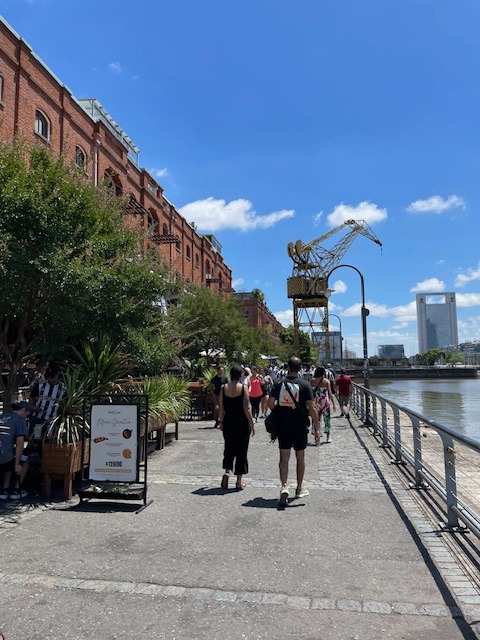



Getting Around Buenos Aires Like a Pro
Buenos Aires may be big, but getting around this bustling city is surprisingly easy, efficient, and affordable, as long as you know your options. Whether you’re zigzagging from San Telmo to Palermo, or hopping between historic plazas and trendy markets, here’s everything you need to know to move around like a local (without accidentally boarding a long-distance bus to Patagonia).
1. Uber: Your Reliable Bestie
Uber works flawlessly in Buenos Aires and is often cheaper and safer than regular taxis. No need to fumble with cash or explain your destination in Spanish—just plug it into the app and go. Cars are clean, drivers are friendly, and the wait time is usually under 5 minutes, even in peak hours.
Tip: If you’re heading to or from the airport or ferry terminal, Uber is often much more affordable than the official taxis. Just be aware that pick-up points can vary, so double-check your app for the exact spot.
2. Subte (Metro): Fast, Clean & Efficient
Buenos Aires’ Subte (short for “subterráneo”) is one of the oldest subway systems in Latin America, and it’s still running strong! There are 6 main lines (A to H), and they connect most of the major neighborhoods and tourist spots.
The stations are clean, safe, and easy to navigate, even if your Spanish is a little rusty. Plus, during rush hour, it’s the best way to avoid getting stuck in traffic.
How to use it:
To ride the metro, you’ll need a SUBE card, a rechargeable contactless travel card that also works on buses and some trains.
You can buy your SUBE card at most kioscos (those little corner shops) or Subte stations but you can only re-charge them at the Subte stations.
Just tap your card at the turnstile and go. Rides cost less than €0.25, seriously.
You can also buy a one way ticket with cash at any Subte station, though this ticket only works for metro not buses.
3. Buses: The Real Local Experience
With over 150 lines crisscrossing the city, Buenos Aires’ bus system is one of the most comprehensive in the world. They’re a fantastic way to see the city, especially if you’re heading somewhere the metro doesn’t reach. Buses run 24/7, and they’re super safe to use.
How to ride:
You’ll need your SUBE card (same one as the metro).
Tell the driver your destination when you board—they’ll program the fare for you.
Tap your card on the reader, grab a seat (if you can find one), and enjoy the ride.
You can only re-charge your SUBE at the Subte stations.
Tip: Use Google Maps or BA Cómo Llego (a free local app) to figure out bus routes and stops.
BONUS TIPS:
Walk whenever you can. Buenos Aires is full of hidden gems, and some of the best parts of the city are the ones you stumble upon while strolling.
Avoid rush hour (8–10 am and 5–7 pm) on public transport if you value your personal space.
Taxis do exist, but they’re not always the safest or cheapest option. If you must take one, go for a Radio Taxi (official, with a visible logo) and always make sure the meter is running.
So, pack your SUBE card, wear comfy shoes, and get ready to explore Buenos Aires like a true porteño. Whether you’re catching a bus to La Boca or a late-night Uber back from Palermo, the city is yours to roam.
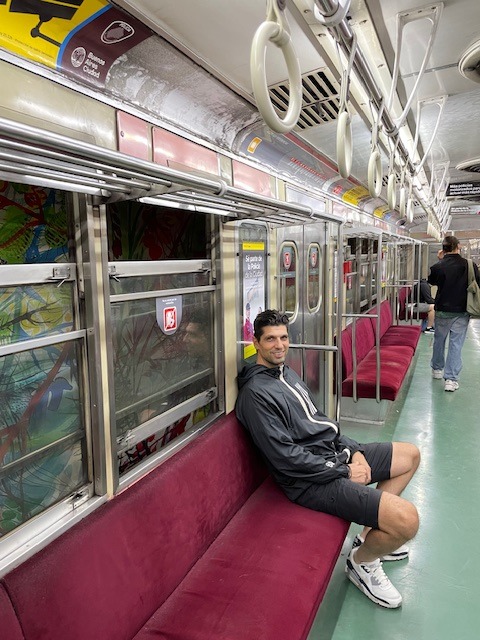



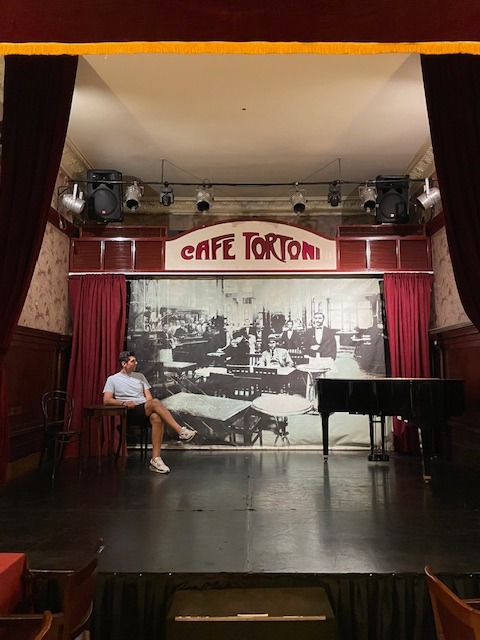

What (and Where) to Eat in Buenos Aires – A Foodie’s Guide
If there’s one thing you’ll remember from your trip to Buenos Aires, besides the stunning architecture, wide boulevards, and emotional tango, it’s the food. Argentina is a carnivore’s playground, a dulce de leche dreamland, and an espresso-loving European soul wrapped in Latin American energy.
From sizzling steaks to mouthwatering empanadas and the best sandwich you never knew you needed, here’s what to eat in Buenos Aires and where to find it, based on our very own 3-day food-filled adventure.
Must-Try Argentine Dishes
Let’s start with a quick crash course on what your taste buds should be expecting:
Asado: The Argentine barbecue. Think ribs, sausages, short ribs, and more, cooked on a parrilla (grill). A religious experience.
Empanadas: Flaky pastries stuffed with meat, cheese, or veggies. A must-try on the go.
Milanesa: A breaded, fried meat cutlet, like a schnitzel, but sexier.
Lomito: The king of all sandwiches, tender steak, lettuce, tomato, and sometimes a fried egg.
Provoleta: Grilled provolone cheese, crispy outside, gooey inside.
Choripán: A chorizo sausage in a crusty bun. Street food royalty.
Dulce de leche: Argentina’s beloved caramel spread, try it on pancakes, in pastries, or straight from the jar.
Helado: Argentine gelato. Creamier, richer, and dulce-de-leche-infused. You’ll cry tears of joy.
Fugazzeta: A type of Argentine pizza, originating in Buenos Aires, that consists of a thick pizza crust topped with onions and sometimes olives.
Where (Exactly) We Ate and Loved It
Café Tortoni (Av. de Mayo): A Buenos Aires classic. Wood-paneled walls, waiters in bow ties, and the best coffee & cake combo in town. You’ll feel like a 1930s poet.
La Rambla Café (Recoleta): Home to the legendary Lomito sandwich, this is not your average steak sandwich. It’s a hug in sandwich form.
Vórtice (inside San Telmo Market): A hidden gem for a local lunch among market stalls and antiques. We had hearty dishes while soaking in the chaos and charm of San Telmo.
In Colonia del Sacramento (Uruguay), we had an incredible chivito for lunch, Uruguay’s national dish. Imagine a sandwich with steak, ham, cheese, tomato, lettuce, and egg. It’s indulgent and 100% worth it.
El Imperio de la Pizza (Av. Corrientes): A legendary Buenos Aires pizzeria that’s all about the crust. Their cheese-stacked pizza is as intense as a tango performance. Don’t miss it.
Bonus Breakfast Tip:
1640 Café Resto (Palermo): We kicked off one of our mornings here with coffee and pastries—perfect fuel before hitting the markets.
Local Bakery Love:
Asturias Bakery (Palermo): A budget-friendly, high-quality bakery. We stocked up on empanadas, sandwiches, and sweets. A hidden gem!
Tips for Eating Out in Buenos Aires:
Dinner is late: Locals don’t even think about dinner before 9 p.m. So if you show up at 7, you’ll probably have the place to yourself.
Portions are BIG: Consider sharing if you want to save room for dessert. Or don’t. We support your choices.
Service is chill: Waiters aren’t rushing you. You’ll need to ask for the check (“la cuenta, por favor”) when you’re ready.
Tipping: 10% is customary at restaurants. It’s often not included in the bill.
Fast Food: What is this? You will hardly find any fast food restaurants. However, you can order delivery from most restaurants.




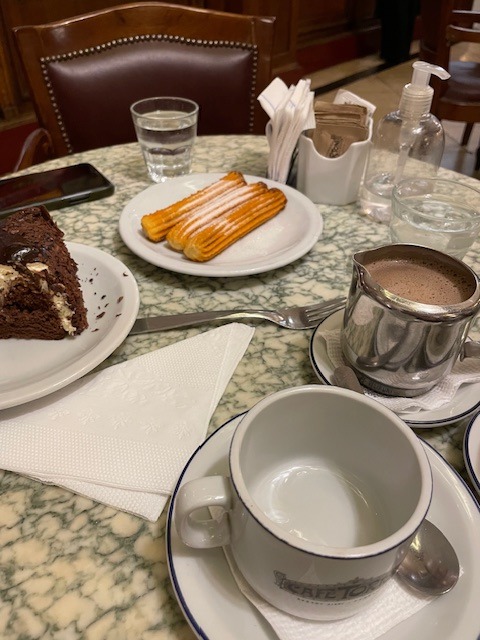

How to stay connected in Buenos Aires
While most hotels, cafés, and restaurants in Buenos Aires offer Wi-Fi, the most convenient way to stay connected is by using an eSIM or a local SIM card. eSIMs are quick to set up and available through apps like Revolut (great if you’re already a user), Nomad (with Argentina and Latin America-wide plans), Airalo (the most popular, with affordable packages starting from just a few dollars), and GigSky or Holafly (perfect for larger or unlimited data bundles). If you prefer a physical SIM, you can easily purchase one from local providers such as Claro, Movistar, or Personal. These are available at mobile stores in the city center, in shopping malls, and even at the airport, making it simple to get connected as soon as you land.



Final Thoughts on Buenos Aires
Buenos Aires is a wonderful city that immediately captures you with its impressive architecture, fiery spirit, and an overall sense of cleanliness and safety. In my opinion, it offers the best food in all of Latin America, making it the perfect destination for endless walks and culinary adventures. Don’t expect typical shopping streets or squares lined with cafés, Buenos Aires has its own unique character. It blends the elegance of European architecture with the vibrancy and energy of Latin America. And yes, it is a rather expensive city, not so much when it comes to transportation or accommodation, but definitely when it comes to food and drinks, which often rival the prices of Northern Europe.
Buenos Aires is big, bold, and bursting with life. You’ll find history on every corner, incredible food at every turn, and neighborhoods that each have their own flavor. And whether you’re sipping coffee in a 19th-century café or crossing the river to Uruguay for the day, one thing’s for sure:
This city dances to its own rhythm, and you’ll love every beat.
Drop us a comment bellow
How to spend 3 days in Buenos Aires
Buenos Aires, the city where tango was born, steaks are sacred, and every corner whispers a piece of history. With European elegance and Latin American soul, Argentina’s capital is a feast for the senses, and we’re here to tell you how to spend 3 days in Buenos Aires
Evi
5/16/202513 min read
